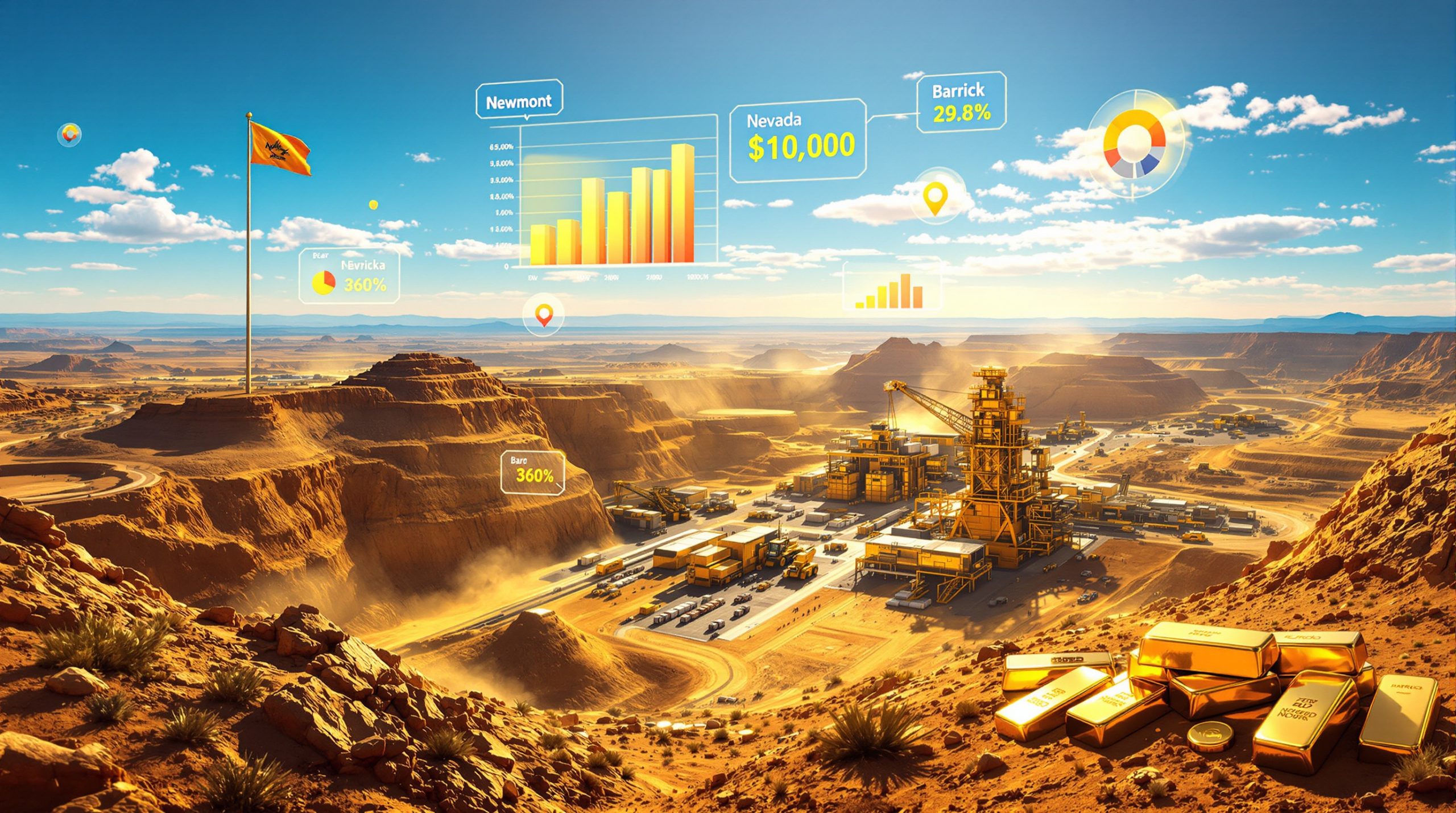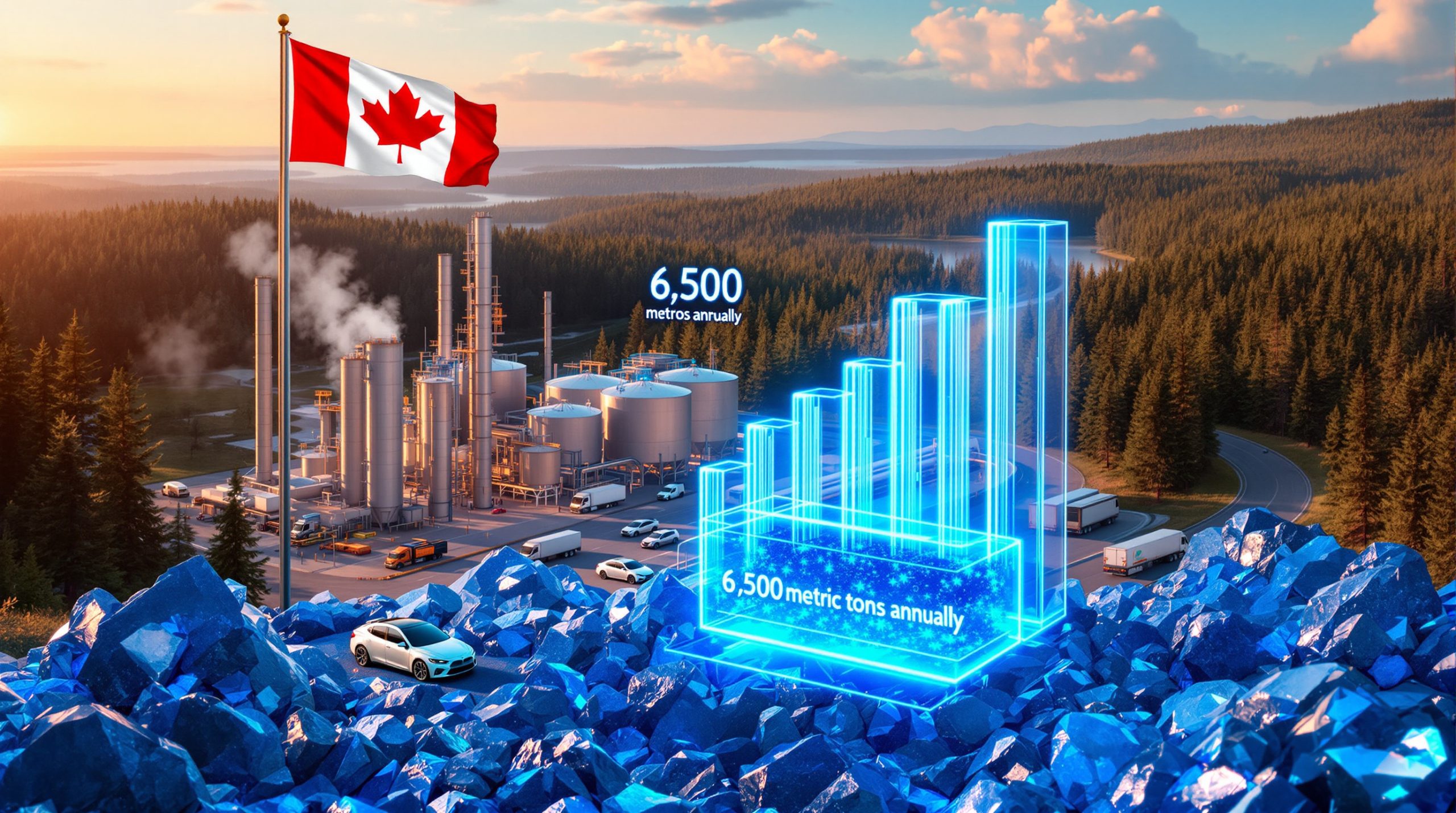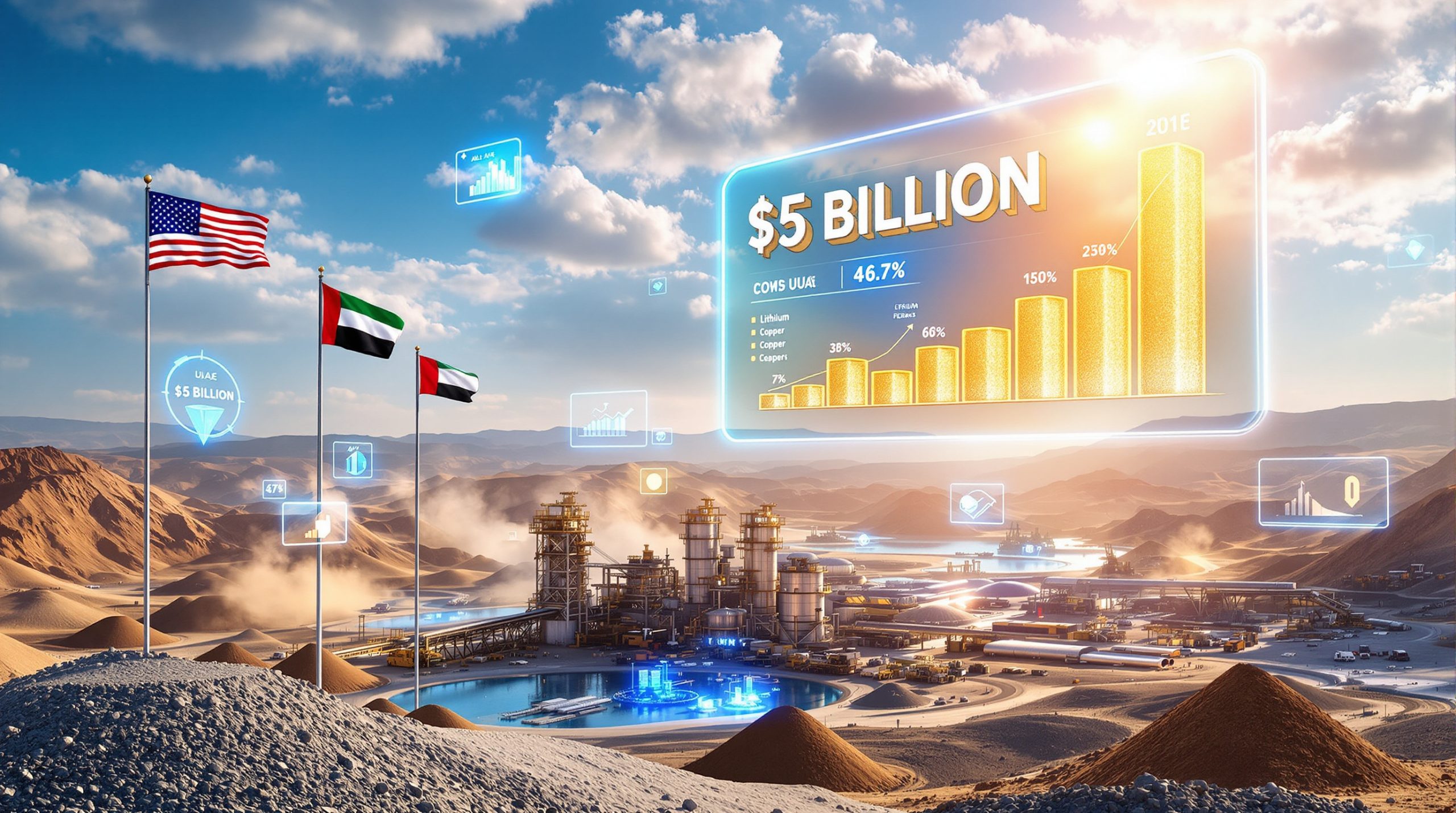What Prompted Glasenberg's Return to Share Purchasing?
Glencore's former chief executive officer and largest shareholder Ivan Glasenberg has increased his stake in the company for the first time in a decade. This strategic move came after a significant share price decline triggered by Donald Trump's announcement of sweeping tariffs, which caused commodity markets to tumble. The timing of this purchase has sparked considerable interest across the mining and investment sectors, as it coincides with Glencore shares hitting their lowest point in more than four years.
Glasenberg's shareholding has now risen to an impressive 1.219 billion shares, reflecting an increase of approximately 7.4 million shares from levels reported in Glencore's most recent annual report. At current market valuations, his stake is worth approximately $3.7 billion, making him not just the company's former CEO but also its most significant individual investor.
The market reaction to Trump's tariff announcements was particularly severe for mining companies, with Glencore experiencing a 22% month-over-month decline, significantly underperforming peers like Rio Tinto (down 15%) and BHP (down 12%). These tariffs specifically impacted base metal prices, including copper and zinc, which constitute roughly 60% of Glencore's revenue stream.
"Insider purchases at this scale often signal leadership's belief in undervalued equity, especially during market panics," noted one market analyst familiar with the mining sector. This perspective aligns with historical patterns, as similar insider buying occurred at Freeport-McMoRan during the 2020 copper price crash, which preceded a 45% rebound in shares.
What makes this purchase particularly notable is Glencore's significantly improved financial resilience compared to 2015. The company now maintains approximately $12 billion in cash reserves, a stark contrast to its 2015 debt crisis when available liquidity was severely constrained. This enhanced position suggests Glasenberg may be positioning himself to benefit from an eventual market recovery with considerably less risk than a decade ago.
Why Did Glasenberg Stop Buying in 2015?
The year 2015 marked one of the most challenging periods in Glencore's history, characterized by a perfect storm of market conditions that threatened the company's very existence. A severe commodity market downturn saw coal prices plunge by 40% while zinc hit 6-year lows. Overall, commodity prices fell approximately 30% year-to-date in 2015, dramatically eroding Glencore's market capitalization by an estimated $50 billion.
This precipitous decline triggered a crisis of investor confidence in Glencore, forcing the company to issue $2.5 billion in new equity amid rapidly falling share prices. The company's net debt-to-EBITDA ratio spiked to a dangerous 4.5x in 2015, breaching loan covenants and triggering credit downgrades that further compounded market dynamics insights.
"The 2015 crash was a perfect storm—oversupply, slowing Chinese demand, and leverage fears," explained a financial historian who has studied mining sector cycles. The severity of the situation forced Glencore to take drastic measures, including suspending dividends and selling $8 billion in assets to avoid bankruptcy.
In this context, Glasenberg invested approximately $210 million to maintain his 9.8% shareholding when the company issued new equity. This significant personal investment demonstrated his commitment to the company but also marked the beginning of a nearly decade-long period where he maintained rather than increased his stake.
Industry analysts have suggested that Glasenberg's decision to pause additional purchases after 2015 reflected prudent financial management rather than diminished confidence. "Glasenberg's 2015 pause reflected prudence, not pessimism; he prioritized debt reduction over equity accumulation," noted one industry analyst with expertise in mining stocks guide and company governance.
The parallels to other mining giants facing similar crises are instructive. Anglo American, for instance, was forced to cut 85% of its capital expenditure and divest approximately half of its assets by 2017 to weather the same market conditions that affected Glencore.
How Does This Purchase Reflect on Glencore's Current Position?
Glasenberg's decision to increase his stake comes at a pivotal moment for both the commodity sector and Glencore specifically. With an EV/EBITDA ratio of 5.1x in 2025, well below the sector average of 7.3x, Glencore shares may present significant value at current prices. This potential undervaluation has likely not escaped the notice of its former CEO, who built his reputation on identifying market opportunities.
The market context for the purchase is particularly significant. Trump's tariff announcement caused broad commodity market declines, with Glencore among the hardest-hit large mining companies. Following the announcement, the company's beta surged to 1.8, indicating substantially heightened volatility compared to the broader market. Short interest in Glencore also rose to 5.2% of float prior to Glasenberg's purchase, potentially amplifying the sell-off momentum.
"Glasenberg's purchase hints at Glencore's leverage to a tariff resolution—a 20% rebound is plausible," suggested a mining sector strategist who has followed the company for over a decade. This interpretation aligns with the view that the market may have overreacted to the tariff news, creating a buying opportunity for those with long-term investment strategies.
Glencore's current financial position also represents a marked improvement from the 2015 crisis period. The company's 2025 net debt of approximately $10 billion is substantially lower than the $30 billion burden it carried in 2015. Its liquidity coverage ratio stands at a robust 3.2x, well above the 1.0x typically required to maintain investor confidence.
The company's exposure to battery metals like cobalt and nickel also positions it favorably for long-term growth in the electric vehicle and renewable energy sectors. These segments may be less directly impacted by tariffs than traditional industrial metals, providing some portfolio diversification benefits.
Glasenberg's purchase may therefore be interpreted as a vote of confidence in Glencore's long-term prospects despite current market turbulence. It potentially signals his belief that the market has overreacted to tariff announcements, creating an opportunity to increase holdings at what he perceives to be a discounted price.
What Is Glasenberg's Current Relationship with Glencore?
While no longer serving as CEO, Ivan Glasenberg maintains significant influence at Glencore through his substantial shareholding. His 10.3% ownership stake not only makes him the company's largest individual shareholder but also grants him considerable sway over major corporate decisions.
Glencore's unique corporate governance structure amplifies Glasenberg's influence beyond what his percentage ownership might suggest. The company's dual-class share structure concentrates voting power among founders, with Glasenberg holding approximately 20% of voting rights despite owning about 10% of economic interest.
"A 10% stake in a $40 billion company ensures Glasenberg remains a kingmaker, even post-retirement," observed a corporate governance expert who specializes in extractive industries. This assessment is supported by Glencore's shareholder agreement, which effectively gives Glasenberg veto power over certain major decisions.
Glasenberg's influence extends to board composition and executive appointments. His role in selecting Gary Nagle as CEO in 2021 demonstrated his continued involvement in leadership succession planning. Additionally, his voting record on climate resolutions in 2023 showed strategic alignment with the company's fossil fuel assets, highlighting his ongoing impact on corporate direction.
The significance of crossing the 10% ownership threshold should not be underestimated. This level of ownership triggers additional regulatory disclosure requirements with both the Securities and Exchange Commission (SEC) in the United States and the Financial Conduct Authority (FCA) in the United Kingdom, bringing increased scrutiny to Glasenberg's investment decisions.
"His influence is structural—board nominations require his tacit approval," noted an investor relations analyst familiar with Glencore's corporate governance. This behind-the-scenes influence means that while Glasenberg may have stepped away from day-to-day operations, his vision for the company likely continues to shape its strategic direction and industry predictions.
FAQ About Glasenberg's Share Purchase
Why is Glasenberg's share purchase significant?
As Glencore's former CEO and largest shareholder, Glasenberg's decision to increase his stake after a decade of maintaining the same position signals potential confidence in the company's value despite recent market challenges. This move is particularly noteworthy given his intimate knowledge of the company's operations and growth prospects. His 2015 investment of $210 million would be worth approximately $1.1 billion today, representing a 420% return and demonstrating his long-term investment acumen.
How did Trump's tariff announcements affect mining companies?
Trump's announcement of global tariffs targeting approximately $300 billion in imports caused commodity markets to tumble, with specific impacts on aluminum (10% tariffs) and copper (7.5% tariffs). According to Bloomberg Business, Glencore experienced one of the steepest declines among major mining companies, with shares reaching a four-year low. The disproportionate impact on Glencore compared to peers reflects the company's greater exposure to base metals and international trade flows.
What was the value of Glasenberg's 2015 investment in Glencore?
During the 2015 crisis, Glasenberg invested approximately $210 million (equivalent to about $270 million in 2025 dollars) to maintain his percentage shareholding when the company was forced to issue new equity. This commitment came at a time when many investors were fleeing commodity stocks, as detailed by Mining.com, highlighting his countercyclical investment approach and long-term perspective.
How much of Glencore does Glasenberg now own?
Glasenberg now owns 1.219 billion shares, representing more than 10% of Glencore's outstanding stock, with a current market value of approximately $3.7 billion. This ownership level gives him significant influence over corporate strategy and major decisions, particularly given Glencore's governance structure which grants him approximately 20% of voting rights. The cross-border nature of his holdings also creates complex tax considerations for capital gains.
Want to Spot the Next Major Mining Discovery?
Discovery Alert's proprietary Discovery IQ model delivers real-time notifications on significant ASX mineral discoveries, helping traders and long-term investors capitalise on market-moving announcements before the broader market. Explore how historic discoveries have generated substantial returns by visiting Discovery Alert's dedicated discoveries page.




